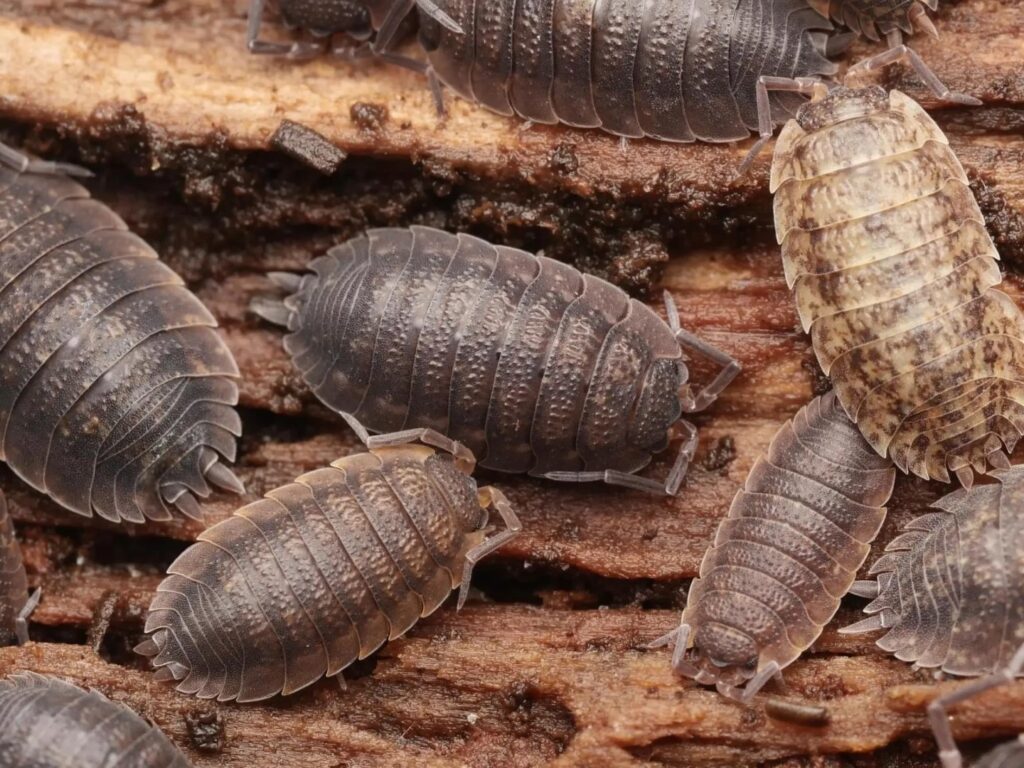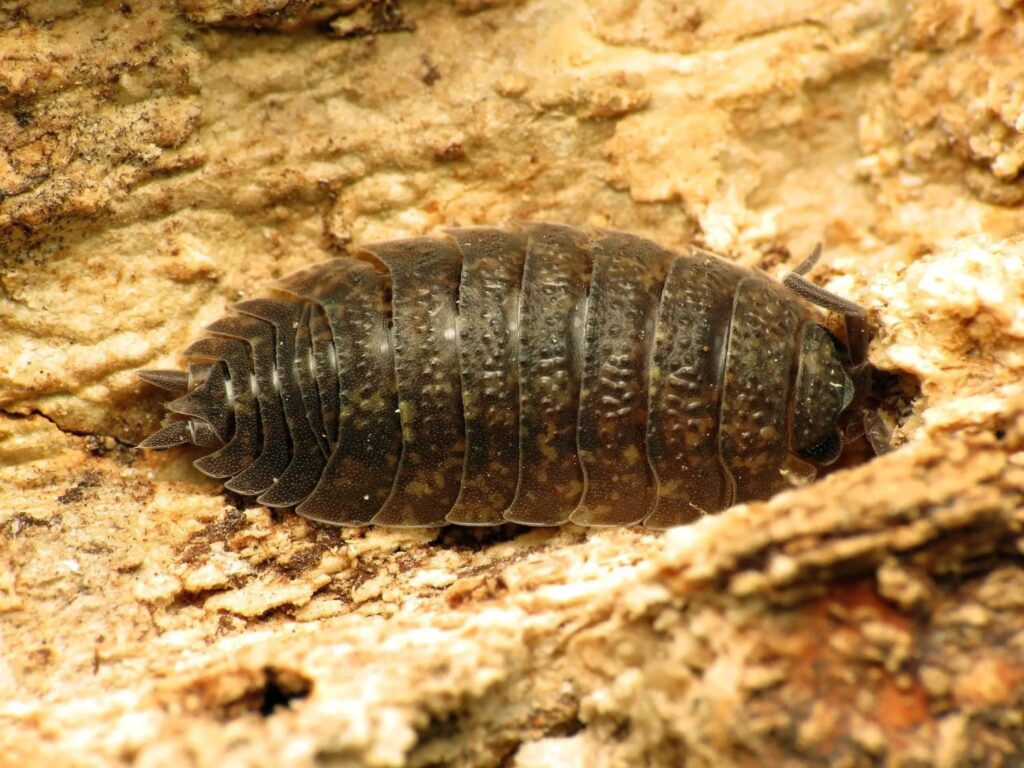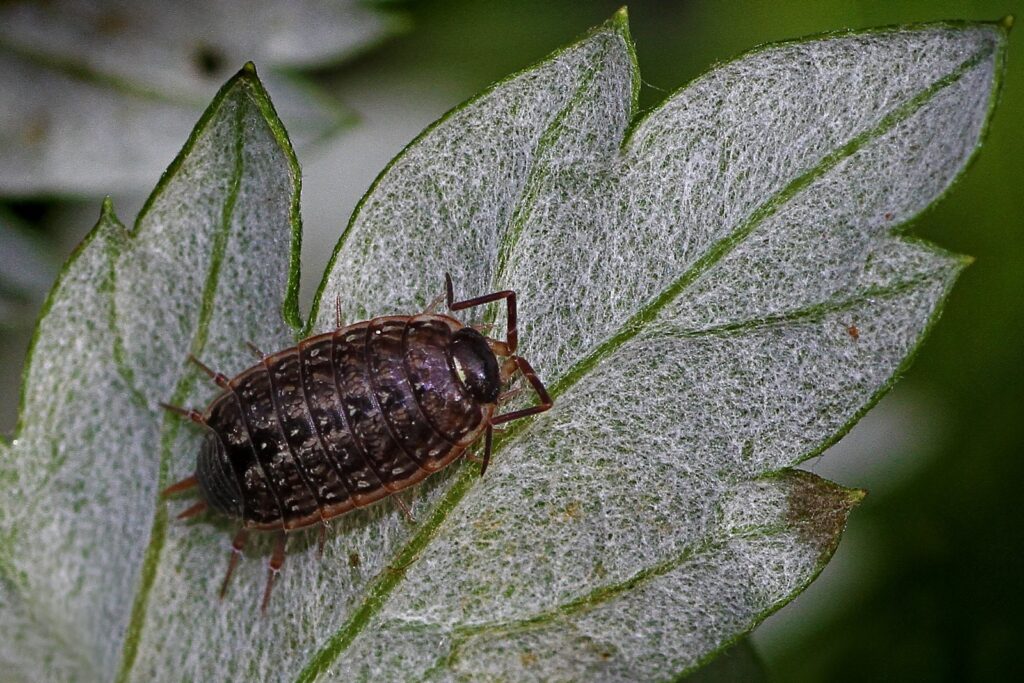Woodlice
What is a Woodlouse?
A woodlouse belongs to the family of terrestrial crustaceans, distinguishing it from common household insects. They require moist environments to survive as they breathe through gills. Woodlice feed on decomposing organic matter, contributing to nutrient cycling.
How to Identify Woodlice?
Woodlice, with their unique ability to roll into a ball when threatened, are fascinating creatures that showcase the diversity of the natural world. Their segmented bodies and grayish color make them distinctive, usually measuring about 15 mm in length. Preferring moist environments, they are frequently found in basements, kitchens, and bathrooms where humidity is higher. These habitats provide ideal conditions for their survival and reproduction, making them regular visitors in these areas.
Their presence can serve as an early indicator of excess moisture in building structures, signaling the need for intervention to preserve the integrity of the home and the health of its occupants.

Additional Information on Woodlice
Pest Type
Terrestrial crustaceans that play a vital ecological role in decomposing organic matter, though their presence is less welcome in homes.
Appearance
With a segmented body up to 15 mm long and the ability to roll into a ball, woodlice are easily identifiable. Their grayish color helps them blend into their natural environment.
Lifespan
Typically living 2 to 3 years, woodlice can reproduce quickly in favorable conditions, highlighting the importance of proactive management.
Habitat
Preferring damp areas under stones or decaying wood, woodlice seek similar environments when entering human dwellings.
Diet
Feeding on decomposing organic matter, they contribute to nutrient recycling in the ecosystem.
Life Cycle
Woodlice can reproduce multiple times a year under favorable conditions, requiring constant vigilance to prevent their proliferation indoors.
Do I Have a Woodlouse Problem?
The presence of woodlice indoors often indicates excessive moisture. Reducing this humidity is key to controlling their population. If you notice increased woodlouse activity, Exterminapro can help identify the source of the problem and implement lasting solutions.
Signs of a Woodlouse Infestation
- Increased Activity in Damp Areas of the Home: Frequently finding woodlice in kitchens, bathrooms, or laundry rooms can indicate excessive humidity.
- Discovery of Woodlice Under Objects in Humid Environments: Woodlice seek dark, damp hiding spots, such as under flower pots or wooden boards near the ground.
- Potential Food Sources: The proximity of compost, leaf piles, or damp wood can attract woodlice to the house’s foundations, increasing the risk of infestation.


Risks Associated with Woodlice
While woodlice pose no direct threat to human health, their significant appearance in a home can indeed signal underlying moisture issues that deserve special attention. A woodlouse infestation may indicate insufficient ventilation or undetected water leaks, which, if left unaddressed, could lead to more severe structural damage or promote the growth of harmful mold.
Exterminapro recognizes the importance of addressing not only the symptoms—in this case, the presence of woodlice—but also the root cause of the infestation. To this end, we offer thorough assessments of affected habitats and develop tailored treatment plans aimed at reducing moisture and eliminating conditions favorable to woodlice proliferation.
Treatments to Get Rid of Woodlice
Exterminapro’s approach aims to reduce moisture and eliminate woodlice food sources to naturally control their population without using harmful chemicals.
Preventing Woodlouse Infestations
- Sanitation of Damp Areas in the Home: Identifying and rectifying sources of excessive moisture is crucial, which may involve repairing leaks, improving drainage, and drying chronically damp areas.
- Removal of Organic Debris Near Foundations: Removing compost piles, leaf piles, and damp wood that attract woodlice and provide them with food and shelter reduces the risk of infestation.
- Adequate Ventilation of Moisture-Prone Areas: Ensuring effective air circulation in basements and other confined spaces to avoid moisture buildup that favors woodlice presence.
Types of Treatments to Control Woodlice
- Personalized Advice to Reduce Indoor Humidity: Exterminapro provides specific recommendations for each home, focusing on reducing indoor humidity, a key factor in preventing woodlice infestations. This may include using dehumidifiers, improving ventilation, and correcting drainage issues.
- Physical Methods to Remove Woodlice and Their Habitat: We use non-chemical techniques to physically remove woodlice and destroy their preferred habitats, such as deep cleaning of infested areas and removing leaf or wood piles near homes.
- Long-Term Prevention Strategies to Avoid Their Return: Exterminapro implements sustainable strategies to prevent infestations, including structural modifications and changes in gardening practices to make the environment less attractive to woodlice.
How to Permanently Eradicate Woodlice?
With Exterminapro, discover sustainable solutions for managing woodlice presence. Our experts will provide you with the tools and knowledge needed to keep your home free of woodlice.
Intervention Process
How Much Does It Cost?
Get a Free Estimate
The cost of Exterminapro’s intervention varies depending on the size of the infestation and the methods used. Contact us for a free estimate and restore a healthy environment.

